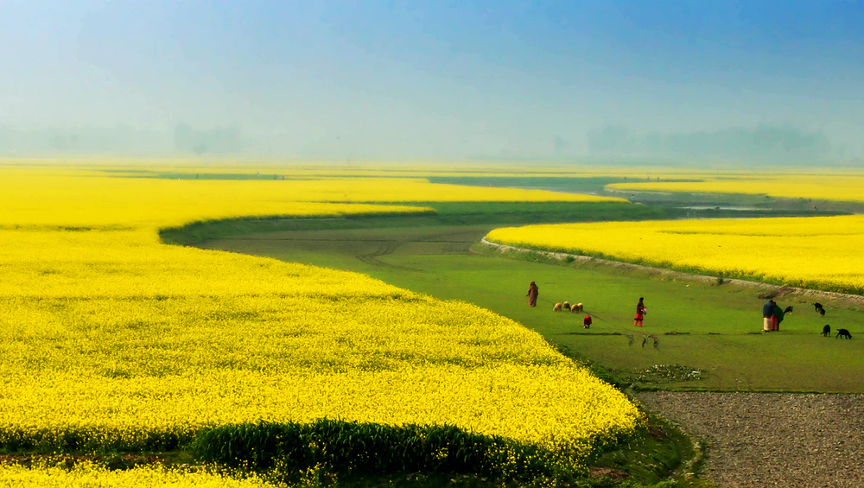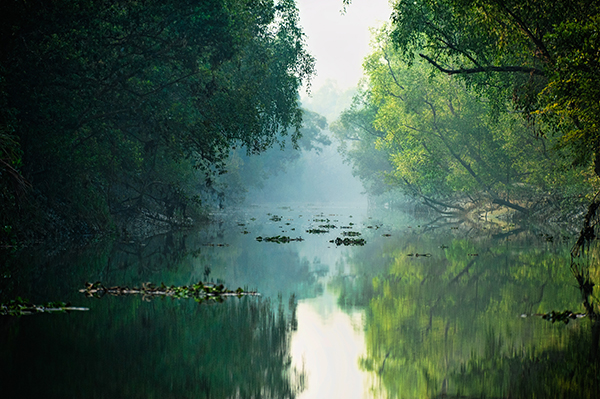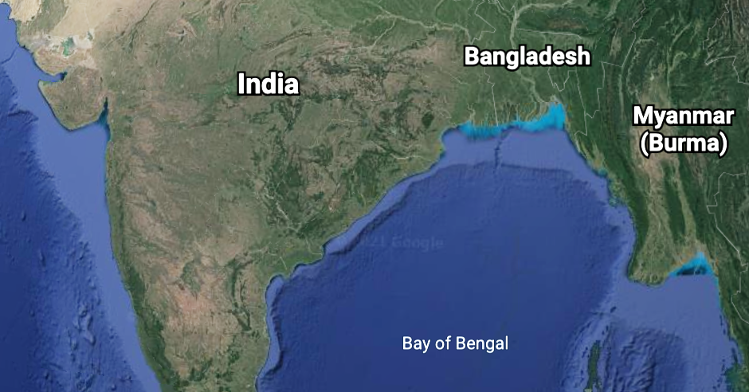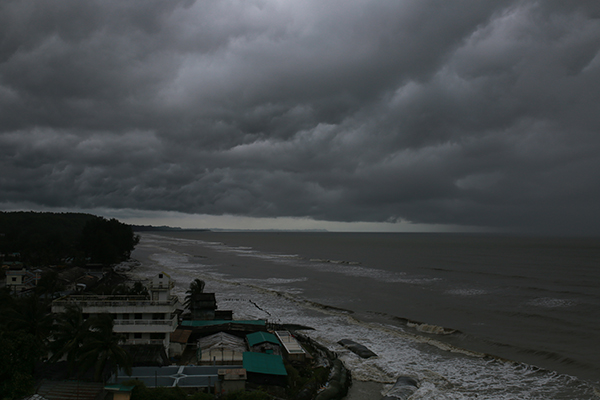| শ্রেণি: দাখিল /SSC/ 2022 বিষয়: ইংরেজি ১ম পত্র এসাইনমেন্টেরের উত্তর 2022 |
|---|
| এসাইনমেন্টের ক্রমিক নংঃ 04 বিষয় কোডঃ 136 |
এসাইনমেন্ট শিরোনামঃ climate change in bangladesh
অ্যাসাইনমেন্ট/ শিরো নাম :
This assignment is based on Unit 5 of EfT
Make a fact file on the adverse impacts of environmental change in your locality
শিখনফল/বিষয়বস্তু :
- Students will understand the relation between human life and nature
Fact File: A collection of information about a particular subject or product
To write the assignment students will
1. present some pictures of the adverse impact of environmental change in his or her own locality.
2. explain the reasons for these environmental changes.
3. analyses the impact of these changes e.g., how these changes are affecting people’s life and ecology
4. how to prevent these adversities.
In writing this assignment the learner will need some pictures. They do not need to be supplied with colourful pictures. If they can, it is good. If they cannot, newspaper cutting or pictures from other sources are okay. Mention the source when you use pictures from other sources. You can also draw the pictures.
the adverse impacts of environmental change in your locality
Rising seas, floods, and intensifying cyclones are just a few of the impacts that make Bangladesh one of the most climate change-vulnerable countries in the world.
Few countries on Earth so exemplify the deep inequity of the climate crisis as Bangladesh.
Despite producing only 0.56% of the global emissions changing our climate, Bangladesh ranks seventh on the list of countries most vulnerable to climate devastation, according to Germanwatch’s 2021 Global Climate Risk Index (CRI).
This threat is not an abstract one. The data shows that from 2000 to 2019, Bangladesh suffered economic losses worth $3.72 billion and witnessed 185 extreme weather events due to climate change.
The story of how that came to be is in many ways a story about geography.
Located east of India on the Bay of Bengal, the country is known for its many waterways, including the world-famous Ganges river. These are waterways that produce rich agricultural soil, allow extensive travel by boat, and provide access to the rest of South Asia and the world.
What’s more, Bangladesh is home to the Sundarbans: the world’s largest contiguous mangrove forest. This UNESCO World Heritage site both provides a livelihood for local people and makes world-renowned biodiversity possible.

However, this same geography also makes Bangladesh one of the most vulnerable countries in the world to sea-level rise, increasingly powerful cyclones, floods, and more.
What’s more, a 2018 U.S. government report found that whopping 90 million Bangladeshis (56 percent of the population) live in “high climate exposure areas,” with 53 million subject to “very high” exposure.
The threat could hardly be clearer. So, here’s a breakdown of some of the major ways climate change threatens Bangladesh.
SEA-LEVEL RISE
Rising seas are a growing threat to people all around Bangladesh. That’s because a staggering two-thirds of the country is less than 15 feet above sea level.
For reference, the elevation of Lower Manhattan in New York City ranges from 7 feet above sea level to a high of 13 feet. And the threat becomes even clearer knowing that about a third of the population of Bangladesh lives by the coast.
It has been estimated that by 2050, one in every seven people in Bangladesh will be displaced by climate change. Specifically, with a projected 19.6 inch (50 cm) rise in sea level, Bangladesh may lose approximately 11% of its land by then, and up to 18 million people may have to migrate because of sea-level rise alone.
Looking even further down the road, Scientific American describes how “climate change in Bangladesh has started what may become the largest mass migration in human history… Some scientists project a five-to-six foot [sea-level] rise by 2100, which would displace perhaps 50 million people.”
What’s more, these rising seas now threaten to inundate the Sundarbans — the mangrove forest in southern Bangladesh. This is a doubly dangerous effect, given that this coastal forest doesn’t just sustain biodiversity and livelihoods, but also shields Bangladesh from the worst of the region’s many cyclones.

(The Sundarbans mangrove forest in southwest Bangladesh.)
But sea-level rise isn’t just a problem because of outright land loss. It’s also a problem because of salinization: the process by which salt infiltrates agricultural land, hindering crop growth by limiting their ability to take up water.
On top of increasingly ruining crops, salinization threatens the drinking water supplies of tens of millions of people in coastal communities. Consuming this salty, contaminated water can expose populations to health problems like cardiovascular diseases.
For context, in 1973, 8.3 million hectares (321,623 square miles) of land were affected by encroaching seawater. By 2009, the number grew to over 105.6 million hectares (407,723square miles), according to Bangladesh’s Soil Resources Development Institute.
Overall, salinity in the country’s soil has increased by about 26% over the past 35 years.
FLOODING AND UNMANAGEABLE URBANIZATION
It’s a well-known fact that, all around the world, climate change is making rainfall more erratic and often far more intense. In Bangladesh, this reality rings especially true.
This phenomenon of stronger downpours – combined with rising temperatures melting the Himalayan glaciers that feed rivers around Bangladesh – is leaving massive swaths of the country far more prone to devastating floods.
Increasingly, supercharged water levels in the Ganges-Meghna-Brahmaputra River Basin are destroying entire villages and hundreds of thousands of livelihoods. Devastation that contributes to over 10 million Bangladeshis already being climate refugees.
As UNICEF describes, “Around 12 million of the children most affected [by climate change] live in and around the powerful river systems which flow through Bangladesh and regularly burst their banks. The most recent major flooding of the Brahmaputra River in 2017 inundated at least 480 community health clinics and damaged some 50,000 tube wells, essential for meeting communities’ safe water needs.”
Of course, that example specifically describes the impact of flooding on children. But the takeaway is clear. Millions of Bangladeshis are having to uproot their lives and migrate because of overflowing rivers.
By one estimate, up to 50% of those now living in Bangladesh’s urban slums may be there because they were forced to flee their rural homes as a result of riverbank flooding.
Similarly, a study completed in 2012 of 1,500 Bangladeshi families migrating to cities, mainly Dhaka, showed that almost of all of them cited the changing environment as the biggest reason for their decision.
Overwhelmingly, when these migrants move into big cities, they don’t find refuge from rural climate challenges, but rather, more and at times worse problems. As the video below describes, they’re forced to settle into densely populated urban slums with rudimentary housing conditions, poor sanitation, and limited economic opportunities.
For context, take Dhaka: Bangladesh’s capital and biggest city. Dhaka holds 47,500 people per square kilometer, nearly twice the population density of Manhattan. Yet, nowadays up to 400,000 more low-income migrants arrive in Dhaka every year.
The riverine flooding and other climate impacts contributing to this unmanageable urbanization has no end in sight. Especially without serious climate action.
CYCLONES
The Bay of Bengal narrows towards its northern shore where it meets the south coast of Bangladesh. This “funneling” can both direct cyclones towards Bangladesh’s coast and make them more intense.
These effects – combined with the fact that most of Bangladesh’s territory is low, flat terrain – can make storm surges absolutely devastating.

(The Bay of Bengal “funneling” up toward the coast of Bangladesh. Maps Data: Google, Landsat/ Copernicus, SIO, NOAA, U.S. Navy, NGA, GEBCO, SK Telecom)
Over the last decade, on average, nearly 700,000 Bangladeshis were displaced each year by natural disasters, according to the Internal Displacement Monitoring Centre. The annual number spikes during years with powerful cyclones, such as the following:
- Back in 2007, Cyclone Sidr struck the country’s coast with wind speeds of up to 149 miles (240 km) per hour, claiming 3,406 lives.
- Just two years later, in 2009, Cyclone Aila affected millions of people, claimed the lives of about 190, and left about 200,000 homeless.
- In 2016, Cyclone Roanu caused disastrous landslides and submerged villages, leaving thousands homeless, forcing half a million people to evacuate, and causing 26 fatalities.
- Three years later, in 2019, Cyclone Bulbul swept through the country, forcing over 2 million people into cyclone shelters. Bulbul spent about 36 hours over Bangladesh, making it one of the longest-lasting cyclones the country has faced in recorded history.
- In 2020, Cyclone Amphan took the lives of 10 people in Bangladesh (and 70 others in India), left thousands homeless, and destroyed at least 176,007 hectares of agricultural land in 17 coastal districts. It was the strongest cyclone ever recorded in the country’s history.

(A coastal storm rolling into Chittagong, Bangladesh.)
For a final example, just this year Cyclone Yaas made landfall with a wind speed of 93 miles (about 150 kilometers) per hour, like its predecessors, bringing momentous devastation, and claiming unnecessary lives.
Now, it can be easy to get lost in the numbers, especially when they’re so overwhelmingly large. But the takeaway is clear: Stronger cyclones are becoming more common because of our changing climate. As a result, Bangladesh is bearing more and more of the same tragic aftermath.
CLIMATE INJUSTICE
Talking about climate impacts in Bangladesh would hardly be complete without mention of the staggering injustice Bangladesh faces. Because overwhelmingly, climate impacts are being imposed on Bangladesh by high-emitting, wealthy countries — not by the people of Bangladesh themselves.
As a country, Bangladesh emits only a tiny fraction of the greenhouse gas emissions causing climate change. Perhaps more telling, the average person in Bangladesh emits 0.5 metric tons of CO2 per year. In the US, for comparison, that number is 15.2 metric tons per person — about 30 times as much.
JOIN OUR MOVEMENT FOR CLIMATE SOLUTIONS
For Bangladesh, for so many other countries, and for everyone’s shared future, the time to act on climate change is now.
Fortunately, we can still make a world of difference.
In the US, the Senate now has the chance to tackle this threat head-on and pass the most ambitious climate bill in the nation’s history — the Build Back Better Act. But passage is far from assured, and our senators need to hear from us to get this over the finish line.
[ বি:দ্র: নমুনা উত্তর দাতা: রাকিব হোসেন সজল ©সর্বস্বত্ব সংরক্ষিত (বাংলা নিউজ এক্সপ্রেস)]
অথবা
Climate is the average weather condition that prevails over a longer period of time in a given area. For example, average temperature, average precipitation, average sunshine etc.
Climate change is any change in the long-term condition of climate variables such as temperature, precipitation, sunshine, or wind velocity over several decades or longer.
Climate change can be due to natural external forcing (changes in solar emission or changes in the earth’s orbit, natural internal processes of the climate system) or it can be human induced.
The period used for describing a climate is 30 years, as defined by the World Meteorological Organization (WMO).
Climate change is now one of the biggest problems across the globe as its impacts on human being and the environment are very terrible and prolonged. Most of the countries of the world are directly and indirectly affected by the adverse effects of climate change.
According to WHO, between 2030 and 2050, climate change is expected to cause approximately 250 000 additional deaths per year, from malnutrition, malaria, diarrhea and heat stress, the direct damage costs to health (i.e. excluding costs in health-determining sectors such as agriculture and water and sanitation), is estimated to be between USD 2-4 billion/year by 2030, areas with weak health infrastructure – mostly for developing countries will be hard to cope without assistance to prepare and respond.
Changing climate started to effect in Bangladesh more than over a decade. Bangladesh is one of the largest deltas in the world which is highly vulnerable to Natural Disasters because of its Geographical location, low-lying landscape, Population density, Poverty, Illiteracy, Lack of Institutional setup etc. The adverse effects of Climate Change-especially High Temperature, Sea-level Rise, changing precipitation pattern, changing crop calendar, Cyclones and Storm Surges, Salinity Intrusion, Heavy Monsoon Downpours etc. has aggravated the general Economic Development state of the country to an adverse extent.
Climate is changing due to many reasons and can be classified into two categories.
Firstly, natural causes- created by the effects of nature including biotic processes and variations in solar radiation received by Earth plate tectonics, and volcanic eruptions etc. Secondly, manmade causes- the causes are made by human being.
As for example, humans are increasingly influencing the climate change by burning fossil fuels like, coal, diesel, petrol, gases; by growing poultry and livestock and by cutting down trees and rain forests which cause greenhouse effect. As a result, the global temperature is growing very high day by day. In addition, many toxic gases like carbon dioxide, carbon monoxide, sulfur dioxide, methane, ammonia and so on are emitting on atmosphere and polluting the environment. These gases are trapping the sun’s heat and stopping it from leaking back into space. As a result, the ozone layer is getting damaged and the atmosphere is getting imbalanced.
Bangladesh experienced various type of Natural Disaster almost every year because of the Global Warming as well as Climate change impacts. These are floods, cyclones and storm surges, salinity intrusion, extreme temperature and drought. Climate change adversely impact on agriculture, fisheries, water resources and hydrology, coastal areas, forestry, urban areas etc.
The economy of Bangladesh based on agriculture, two thirds of the people engaged directly and indirectly on agriculture activities. The overall impact of changing climate on Agricultural production in Bangladesh would be wide spread and devastating for the country’s economy.
Beside this, other impacts of Climate Change like Extreme Temperature, Drought, and Salinity Intrusion etc. are also responsible for the declining crop yields in Bangladesh.
Temperature and Rainfall changes as well as crop calendar change have already affected crop production in many parts of the country and the area of arable land has decreased to a great extent. In a high population density country like Bangladesh, the effects of Climate Change on the Surface and Ground water resources will be very adverse and alarming.
Changing in water resources and hydrology will have a significant impact on the country’s economy. People who live in the coastal regions some how affected by Coastal Floods / Tidal Surges, River-bank Erosion, Salinity, Tropical Cyclones etc. Climate change effect on the biodiversity adversely.
Various flora and fauna suffering much and climate change damage their biodiversity. Sundarban also hampering much because of changing climate. Climate change causes acid rain that damage infrastructure as well as building in urban areas most.
The glaciers are melting, sea-level rising since the World is getting warmer, changing pattern of precipitation, changing crop calendar, damaging biodiversity- We should come forward and fight for our common problem climate change to solve.
To protect our country from the adverse impact of climate change some policies should be taken like green community, blue economy, energy efficient system, choose renewable power, let polluters pay, support and donate etc. Rules and regulation should be strict.
Researchers should try to find out more efficient energy source as much as sustainable. It is also important our understanding of emissions from industry which would ultimately improve climate model and find out more efficient industrial system. We should not think climate change is an individual problem of any country or nation. It’s our common problem; we have to face the problem efficiently as “Citizens of the Global Village” from now on. Let’s protect our Lovely Planet in a sustainable way as the Safe Home for our future Generation.
প্রশ্ন ও মতামত জানাতে পারেন আমাদের কে ইমেল : info@banglanewsexpress.com
আমরা আছি নিচের সামাজিক মাধ্যম গুলোতে ও
অন্য সকল ক্লাস এর অ্যাসাইনমেন্ট উত্তর সমূহ :-
- ভোকেশনাল ও দাখিল (১০ম শ্রেণির) অ্যাসাইনমেন্ট উত্তর লিংক
- SSC ও দাখিল এসাইনমেন্ট উত্তর লিংক
- HSC ও Alim এসাইনমেন্ট উত্তর লিংক
- Class: 6 To 9 Assignment Answer Link
৬ষ্ঠ শ্রেণীর এ্যাসাইনমেন্ট উত্তর , ৭ম শ্রেণীর এ্যাসাইনমেন্ট উত্তর,
৮ম শ্রেণীর এ্যাসাইনমেন্ট উত্তর , ৯ম শ্রেণীর এ্যাসাইনমেন্ট উত্তর
বাংলা নিউজ এক্সপ্রেস// https://www.banglanewsexpress.com/
- ইসলামিক স্টাডিজ ৫ম পত্র সাজেশন ডিগ্রি ৩য় বর্ষ , degree 3rd year islamic studies 5th paper suggestion,ডিগ্রি ৩য় বর্ষ ইসলামিক স্টাডিজ ৫ম পত্র সাজেশন, ডিগ্রী ৩য় বর্ষের ইসলামিক স্টাডিজ ৫ম পত্র সাজেশন PDF Download

- মাধ্যমিক ৯ম/নবম শ্রেণির পৌরনীতি ও নাগরিকতা ৬ষ্ঠ সপ্তাহের অ্যাসাইনমেন্টের সমাধান ২০২২,৯ম শ্রেণির পৌরনীতি ও নাগরিকতা ৬ষ্ঠ সপ্তাহের অ্যাসাইনমেন্টের সমাধান ২০২২, class 9 politics and citizenship solution (6th week) 2022, class 9 answer 2022 [6th week politics and citizenship solution 2022]
![মাধ্যমিক ৯ম/নবম শ্রেণির পৌরনীতি ও নাগরিকতা ৬ষ্ঠ সপ্তাহের অ্যাসাইনমেন্টের সমাধান ২০২২,৯ম শ্রেণির পৌরনীতি ও নাগরিকতা ৬ষ্ঠ সপ্তাহের অ্যাসাইনমেন্টের সমাধান ২০২২, class 9 politics and citizenship solution (6th week) 2022, class 9 answer 2022 [6th week politics and citizenship solution 2022] 3 মাধ্যমিক ৯ম/নবম শ্রেণির পৌরনীতি ও নাগরিকতা ৬ষ্ঠ সপ্তাহের অ্যাসাইনমেন্টের সমাধান ২০২২,৯ম শ্রেণির পৌরনীতি ও নাগরিকতা ৬ষ্ঠ সপ্তাহের অ্যাসাইনমেন্টের সমাধান ২০২২, class 9 politics and citizenship solution (6th week) 2022, class 9 answer 2022 [6th week politics and citizenship solution 2022]](https://www.banglanewsexpress.com/wp-content/uploads/2022/03/বাংলা-নিউস-এক্সপ্রেস-assignment-147-300x166.jpg)
- মাধ্যমিক ৯ম/নবম শ্রেণির বাংলাদেশ ও বিশ্বপরিচয় ৬ষ্ঠ সপ্তাহের অ্যাসাইনমেন্টের সমাধান ২০২২,৯ম শ্রেণির বাংলাদেশ ও বিশ্বপরিচয় ৬ষ্ঠ সপ্তাহের অ্যাসাইনমেন্টের সমাধান ২০২২, class 9 bangladesh and world identity solution (6th week) 2022
![মাধ্যমিক ৯ম/নবম শ্রেণির বাংলাদেশ ও বিশ্বপরিচয় ৬ষ্ঠ সপ্তাহের অ্যাসাইনমেন্টের সমাধান ২০২২,৯ম শ্রেণির বাংলাদেশ ও বিশ্বপরিচয় ৬ষ্ঠ সপ্তাহের অ্যাসাইনমেন্টের সমাধান ২০২২, class 9 bangladesh and world identity solution (6th week) 2022 4 মাধ্যমিক ৯ম/নবম শ্রেণির বাংলাদেশ ও বিশ্বপরিচয় ৬ষ্ঠ সপ্তাহের অ্যাসাইনমেন্টের সমাধান ২০২২,৯ম শ্রেণির বাংলাদেশ ও বিশ্বপরিচয় ৬ষ্ঠ সপ্তাহের অ্যাসাইনমেন্টের সমাধান ২০২২, class 9 bangladesh and world identity solution (6th week) 2022, class 9 answer 2022 [6th week bangladesh and world identity solution 2022]](https://www.banglanewsexpress.com/wp-content/uploads/2022/03/বাংলা-নিউস-এক্সপ্রেস-assignment-145-300x168.jpg)
- মাধ্যমিক ৯ম/নবম শ্রেণির বিজ্ঞান ৬ষ্ঠ সপ্তাহের অ্যাসাইনমেন্টের সমাধান ২০২২,৯ম শ্রেণির বিজ্ঞান ৬ষ্ঠ সপ্তাহের অ্যাসাইনমেন্টের সমাধান ২০২২, class 9 science solution (6th week) 2022, class 9 answer 2022 [6th week science solution 2022]
![মাধ্যমিক ৯ম/নবম শ্রেণির বিজ্ঞান ৬ষ্ঠ সপ্তাহের অ্যাসাইনমেন্টের সমাধান ২০২২,৯ম শ্রেণির বিজ্ঞান ৬ষ্ঠ সপ্তাহের অ্যাসাইনমেন্টের সমাধান ২০২২, class 9 science solution (6th week) 2022, class 9 answer 2022 [6th week science solution 2022] 5 মাধ্যমিক ৯ম/নবম শ্রেণির বিজ্ঞান ৬ষ্ঠ সপ্তাহের অ্যাসাইনমেন্টের সমাধান ২০২২,৯ম শ্রেণির বিজ্ঞান ৬ষ্ঠ সপ্তাহের অ্যাসাইনমেন্টের সমাধান ২০২২, class 9 science solution (6th week) 2022, class 9 answer 2022 [6th week science solution 2022]](https://www.banglanewsexpress.com/wp-content/uploads/2022/03/বাংলা-নিউস-এক্সপ্রেস-assignment-143-300x164.jpg)
- মাধ্যমিক ৯ম/নবম শ্রেণির ফিন্যান্স ও ব্যাংকিং ৬ষ্ঠ সপ্তাহের অ্যাসাইনমেন্টের সমাধান ২০২২,৯ম শ্রেণির ফিন্যান্স ও ব্যাংকিং ৬ষ্ঠ সপ্তাহের অ্যাসাইনমেন্টের সমাধান ২০২২, class 9 finance and banking solution (6th week) 2022
![মাধ্যমিক ৯ম/নবম শ্রেণির ফিন্যান্স ও ব্যাংকিং ৬ষ্ঠ সপ্তাহের অ্যাসাইনমেন্টের সমাধান ২০২২,৯ম শ্রেণির ফিন্যান্স ও ব্যাংকিং ৬ষ্ঠ সপ্তাহের অ্যাসাইনমেন্টের সমাধান ২০২২, class 9 finance and banking solution (6th week) 2022 6 মাধ্যমিক ৯ম/নবম শ্রেণির ফিন্যান্স ও ব্যাংকিং ৬ষ্ঠ সপ্তাহের অ্যাসাইনমেন্টের সমাধান ২০২২,৯ম শ্রেণির ফিন্যান্স ও ব্যাংকিং ৬ষ্ঠ সপ্তাহের অ্যাসাইনমেন্টের সমাধান ২০২২, class 9 finance and banking solution (6th week) 2022, class 9 answer 2022 [6th week finance and banking solution 2022]](https://www.banglanewsexpress.com/wp-content/uploads/2022/03/বাংলা-নিউস-এক্সপ্রেস-assignment-142-300x166.jpg)
- মাধ্যমিক ৯ম/নবম শ্রেণির জীববিজ্ঞান ৬ষ্ঠ সপ্তাহের অ্যাসাইনমেন্টের সমাধান ২০২২,৯ম শ্রেণির জীববিজ্ঞান ৬ষ্ঠ সপ্তাহের অ্যাসাইনমেন্টের সমাধান ২০২২, class 9 biology solution (6th week) 2022, class 9 answer 2022 [6th week biology solution 2022]
![মাধ্যমিক ৯ম/নবম শ্রেণির জীববিজ্ঞান ৬ষ্ঠ সপ্তাহের অ্যাসাইনমেন্টের সমাধান ২০২২,৯ম শ্রেণির জীববিজ্ঞান ৬ষ্ঠ সপ্তাহের অ্যাসাইনমেন্টের সমাধান ২০২২, class 9 biology solution (6th week) 2022, class 9 answer 2022 [6th week biology solution 2022] 7 মাধ্যমিক ৯ম/নবম শ্রেণির জীববিজ্ঞান ৬ষ্ঠ সপ্তাহের অ্যাসাইনমেন্টের সমাধান ২০২২,৯ম শ্রেণির জীববিজ্ঞান ৬ষ্ঠ সপ্তাহের অ্যাসাইনমেন্টের সমাধান ২০২২, class 9 biology solution (6th week) 2022, class 9 answer 2022 [6th week biology solution 2022]](https://www.banglanewsexpress.com/wp-content/uploads/2022/03/বাংলা-নিউস-এক্সপ্রেস-assignment-140-300x167.jpg)





